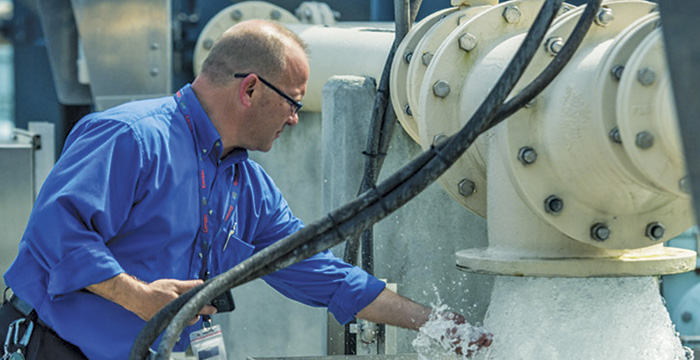For Seminole County Water District in Florida, high-quality drinking water—along with reliable wastewater collection and treatment—is its highest priority in serving more than 440,000 residents. Operating five water treatment plants, two wastewater facilities and three reclaimed facilities, Seminole County has relied on one software solution for more than 20 years.
The department realized in recent years that it needed to have more mobile services to manage plant facilities and communicating among plant manager. They wanted to make plant operations data readily accessible so employees working in the field could have access from their mobile devices, to then take action as necessary. Increasing expectations from an “always on” world has resulted in a need to deliver elevated service levels to customer inquiries.
With the task of producing more than 45 million gallons of fresh drinking water each day, the management team first looked to their existing software solution to explore if they had comprehensive mobile capabilities that could easily integrate with its existing applications.
 Advances in mobile technology mean operators can have real-time alerting at their fingertips. (Courtesy of Schneider Electric.)
Advances in mobile technology mean operators can have real-time alerting at their fingertips. (Courtesy of Schneider Electric.)The mobile option gathers real-time process data and generates key performance indicators, which it then makes available through a variety of mobile devices. It connects mobile phones with any corporate or production system data source. This option offered a variety of features that would best meet the county’s requirements, allowing plant managers and operators view plant data on their smartphones and handheld and tablet devices.
This choice to implement such an application reduces costs and improves productivity while enabling faster and better decision-making. Users are better equipped to review, analyze and collaborate—regardless of physical location.
“We were trying to figure out the best way to get information from the historian out to the field,” said Russell W. Carpenter, Technology Coordinator at Seminole County Water Division. “Our field operators and managers wanted to see their own trends, their own data and we were having a hard time finding something they could use to do that. ... Now they are able to have all the data they need at their fingertips. It just makes their job a lot easier.”
Seminole County operators can now receive personalized alert notifications based on configurable thresholds for reports. The software’s features include:
- Proactive push notifications, based on configurable threshold
- Real-time alerting
- Ring or vibrate notifications
“With this product, one of my chief operators has setup his own custom alerts,” said Carpenter. “So let’s say he’s at home sitting on the couch watching a football game and he gets an alert. He’ll call the guys that are supposed to be taking care of that plant and let them know ‘hey your chlorine residuals are dropping.’”
With the prevalence of smartphone and other mobile technologies, the phone app leverages this technology so plant data is always available on a cellphone, and in a form that is easy to view and manipulate.
Many of today’s top companies are using cloud computing to provide workers with important company information in a cost-effective and secure manner. Seminole County’s solution provides the option of leveraging this hosted model to provide critical plant performance data at the lowest possible cost in less than one day, or the option of an an on-premises deployment for maximum control and security.
Case Study Notes
Goals- To implement a mobile process management system that could accelerate response times and increase efficiency while improving service levels, ensuring the safety of the more than 46 million gallons of water produced each day
- To enable field operators to access critical data via mobile devices for immediate decision-making onsite
- Had to keep an operator 24 hours a day at a SCADA desk or waiting for alarms to come in and people called or paged out
- The county needed a better method to access data from the historian, and communicate it to field operators accurately in a timely manner
- Answers are now provided to operators within minutes instead of a half-hour to manage operations of Seminole County’s 10 facilities
- Operators receive alerts before alarms occur, enabling them to address an issue before it becomes a problem, and before the county’s 440,000 residents even know there’s a problem


